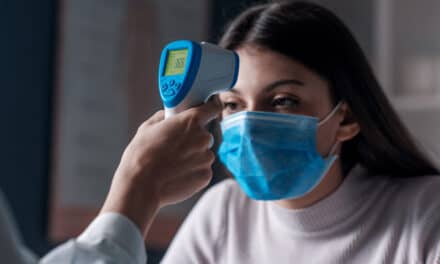by Debbie Best
Establishing fair boundaries and protocols will help keep your practice free of toxic behavior and sexual harassment
 |
The orthodontic profession offers doctors and team members the opportunity to create beautiful smiles for patients in a fun, professional environment. The employment requirements for working in a quality orthodontic practice often include the provision that employees have the ability to work cohesively with fellow team members to provide an atmosphere of trust, mutual respect, and cooperation. Under the umbrella of trust and mutual respect is the right and responsibility for every orthodontist and employee to work in an environment free of sexual harassment.
Orthodontic team members often consider themselves a part of one big, happy family. Co-workers frequently become as close to one another as they are with friends and family outside of the profession. Laughter bounces off of the walls as patients are given quality treatment in a professional setting. It is easy to sometimes become too relaxed while chatting with one another; inappropriate language or topics of discussion sneak in without thought. The individual who you directly communicate with might not be offended. However, a coworker overhearing the conversation might not be comfortable with the subject or language used.
With the birth of the Internet, the illusion of privacy is quickly fading. Off-color jokes fly through cyberspace and are forwarded to coworkers with little thought as to whether they could be construed as a form of sexual harassment. A fine line separates feeling comfortable sharing information that has a sexual content from acting or speaking in a manner that contributes to a hostile environment.
Definitions and Boundaries
 |
| Debbie Best |
What exactly is sexual harassment? Sexual harassment is defined by the Equal Employment Opportunity Commission as “unwelcome sexual advances, requests for sexual favors, and other verbal or physical conduct of a sexual nature.” The US Supreme Court has identified two types of unlawful sexual harassment:
- Sexual advances that are made by a supervisor who can make or influence employment actions (firing, change in employee status, raises, etc) if the employee is not sexually cooperative. Only unwelcome conduct is considered sexual harassment.
- Creating a hostile environment, which includes telling off-color jokes, commenting on physical attributes, using offensive language, posting sexually suggestive pictures, and unnecessary touching or discussing sexual activities.
Does that mean that the Maxine jokes on the bulletin board in the team lunch room may contribute to a hostile environment? And what about the picture cut out from the firefighter calendar or the swimsuit issue of Sports Illustrated? If an employee communicates to the doctor or supervisor that they find a picture or joke offensive and it remains on the bulletin board, this can be considered a hostile environment.
The same rule applies if demeaning or inappropriate terms are used when referring to an employee or team member. “Babe,” “Honey,” and “My Girl” are not appropriate when referring to a coworker. Use team members’ names whenever referring to them or talking to them one-on-one. The use of a person’s name makes the co-worker feel validated and empowers them to their coworkers, the patients and parents, and the doctor.
The legal boundaries are poorly defined when it comes to determining when offensive conduct crosses the line from childish and inappropriate behavior to unlawful gender discrimination. It has been determined that men and women, for the most part, have different levels of sensitivity. Since the boundaries are poorly defined, it is best to avoid all sexually charged conduct and conversation in the workplace. If you are unsure whether behavior can be considered sexual harassment, ask yourself:
- Is the language or behavior of a sexual nature?
- Is it offensive to you or to other people who witnessed it?
- Does it make your job unpleasant?
- Does the person who initiated the behavior have the power to fire or demote you?
- Are you forced to tolerate the behavior to keep your job?
Dos and Don’ts
If you feel that you have been a target of sexual harassment:
- DO admit that there is a problem.
- DO communicate to the offender specifically what you find offensive.
- DO communicate exactly the behavior or language that you do not want to experience or hear again.
- DO talk only to the doctor or to your immediate supervisor if a formal complaint is warranted.
- DON’T blame yourself for someone else’s behavior.
- DON’T ignore the situation.
- DON’T try to handle it yourself if your communication with the offender is unsuccessful.
- DON’T share your complaint with coworkers who are not involved after an official complaint has been filed.
Other Steps to Take
Team members and orthodontists share a responsibility in maintaining a harassment-free work environment. Provide sexual harassment training and establish an effective grievance process. Implement a written policy, including examples of prohibited behavior. Clearly outline the correct procedures for handling complaints, including who should be contacted, and what immediate and appropriate action will be taken (a written warning, immediate discharge, etc). Each employee should sign your sexual harassment policy, and the signed document should stay in their employment file.
Maintain open lines of communication in the office. Anyone who believes that he or she is being subjected to harassment or has witnessed inappropriate conduct must notify the orthodontist or the supervisor immediately. If you hear about a problem or complaint, it is your responsibility to report it to the doctor or to the appropriate manager.
Conduct a confidential investigation and assure the employee that there will be no retaliation against victims or witnesses for notifying the appropriate person about the inappropriate conduct. The law protects any employee who participates in complaints.
|
To read more articles by and about Debbie Best, search for her name at the top of the page. |
Make a commitment to promote and maintain a productive workplace, free from the toxic effects of sexual harassment, discrimination, and harassment. Do not tolerate physical or verbal conduct that interferes with the performance or well-being of your team members or contributes to an intimidating or hostile work environment. Provide a safe working setting that encourages team members to excel while providing excellent orthodontic care to your patients and to the community. Walk tall knowing that the orthodontic profession offers the best of all worlds: the joy of changing patients’ lives in a setting that cherishes the curiosity of a child, yet is safe due to the wisdom of experience. Good-bye toxic environment, hello sexual-harassment-free future.
Debbie Best, a practice management consultant and lecturer for Consulting Network, has more than 35 years of experience in the dental and orthodontic field. She can be reached at (925) 447-6993; consultingnetwork.org; or










